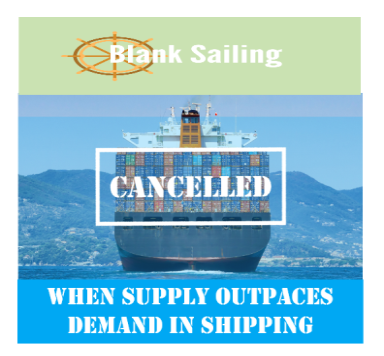Importers and exporters need to be aware that in recent months, container shipping lines have been implementing robust ‘capacity management’ controls to prevent what they call ‘rate erosion,’ as supply continues to outpace demand.
This has led to space shortages due to the continued cancellation of voyages – also known as ‘blank sailings’ – which is the term used when a ship’s schedule is cancelled by the carrier. It could mean the vessel is skipping one port, or that the entire voyage is cancelled. This situation has been commonplace in the Northern hemisphere since last year, and is now occurring more frequently between Asia and Australia / New Zealand.
Other recent factors have also been affecting ships’ schedules, such as adverse weather, port omissions, changes to rotation and terminal calls – creating a backlog of cargo that causes a knock-on effect, as bookings have to be rolled onto subsequent vessels. If your container was booked on a sailing that has been cancelled, it will be rescheduled to move on the next available sailing.
Some carriers have repositioned vessels from the Australian and New Zealand trades to higher-yielding routes, while others have reduced their weekly space by downgrading larger vessels to smaller ones.
ANL has recently downsized some of the vessels on their Australia Asia Express (AAX) services and reduced capacity on one service from three vessels to two.
More blank sailings were implemented last month with the A3C services run by (COSCO / ANL / OOCL). OOCL had to put one of its vessels into dry dock and will not replace it, which will tighten space for them in the coming months.
One of the main issues for carriers, of course, is that they want to maintain freight rates at a profitable level. They were frustrated in their attempts to implement ‘rate restorations’ on Northeast Asia to Australia and New Zealand routes in the first half of this year, which has led to a raft of cancelled sailings.
As demand remains low, shipping lines are worried about freight rates falling too low and feel under pressure to take action to review their capacity or make structural changes to their services.
Despite this, the recent rolling of bookings and space shortages has caused an artificial peak, giving shipping lines the confidence to apply three rate restorations from Northeast Asia to Australia and New Zealand for sailings that departed on 01 August, 15 August and 01 September, 2023 respectively, at around USD 150 per TEU on top of spot rates.
The ever-changing market will continue to challenge carriers to stabilize freight rates by reducing capacity. We know shipping schedules play a pivotal role in determining competitive options for shippers as long as disruptions continue to impact supply chains. We are also aware that the gap between supply and demand needs to close to keep smaller shipping lines afloat. Furthermore, the uncertainty of schedules has a negative impact on Australia’s container terminals.
For many clients the ETA of your consignment becomes more critical than ever in the final quarter of the year. Colless Young wishes to assure you that we diligently monitor sailing schedules and will notify you promptly if there are any changes to your bookings. If you have any concerns about timetables, please do not hesitate to call us.
Read our related article: When Just-in-Time gets Out-of-Step.
As licensed Customs Brokers and International Freight Forwarders, Colless Young professionally handles shipping and customs clearance of all your import consignments by both sea cargo and airfreight. We provide a complete range of services including landed costings, quarantine treatments, trucking, warehousing and exporting. We are based in Brisbane and offer logistics facilities through all Australian ports and airports.

